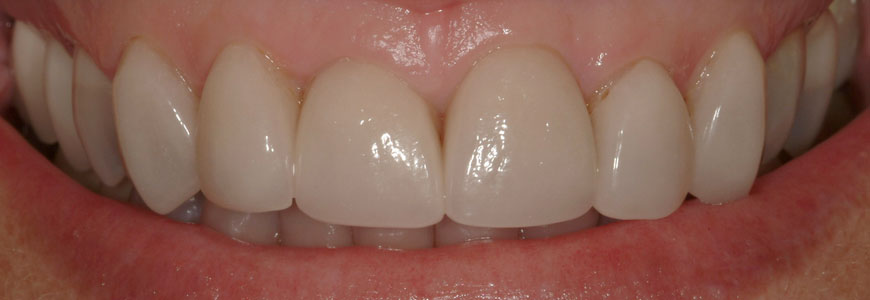
For some people a full smile with bright white teeth is not possible. Such people show small teeth with a lot of red gums. They see their smile as a GUMMY SMILE and don't know that something can be done to give them a fuller, more cosmetically pleasing smile.
In other words, Smile is considered a "gummy smile" if a significant amount of gingival tissue (gums) can be seen as a person smiles. Although a gummy smile is considered a normal variation of human anatomy, many people with gummy smiles are very self-conscious when smiling. Fortunately, these smiles can be corrected with simple periodontal surgery procedures.
There are several possible causes of gummy smile, including: Gum tissue growing excessively in your upper jaw can result from the abnormal eruption of the teeth. Teeth covered by excessive gum tissue appear short, even though they may actually be the proper length. Sometimes the muscle that controls the movement of your upper lip could be hyperactive, causing your upper lip to rise up higher than normal. When this occurs, more of your gum tissue is exposed when you smile. The manner in which your upper jaw bone grew and developed could also cause the appearance of a gummy smile.
Your smile line is determined by different factors like shape and size of your teeth and lips, gum tissue and facial muscles. The best smile appearance should expose a minimum amount of gum tissue. The gum tissue should be balanced with even contours which will be in harmony with upper lip. For this reason many individuals consider their smile to be unattractive. There are many serious dental problems related to your gummy smile. If your gummy smile is because of your jaw development and teeth eruptions then you may have an improper bite that can affect your oral health completely.
If you have a gummy smile, visit your dentist for confirmation and treatment options. Your dentist will examine your mouth, teeth and gums to determine the extent of the excessive gingival display and any possible causes. This examination may involve conventional and/or digital impressions of your teeth and gums. You may also need X-ray imaging so that the tooth roots and jaw bone can be carefully examined. If you suffer from a severe gummy smile, your dentist may refer you to a specialist, like a periodontist, orthodontist or an oral surgeon. Depending on the nature of your specific clinical condition, treatment for your gummy smile could include one or more of the following:
- Same-day laser treatments (in minor cases).
- Surgical lip repositioning
- Orthodontics (braces) to move the teeth into more suitable positions.
- Surgical Sculpting of the gingival tissues and bone to create healthier and more attractive looking gum contours
- Maxillofacial surgery to reposition the bone.
The American Academy of Periodontology states that the benefits of crown lengthening procedures include increased comfort and confidence when smiling, eating and speaking, as well as improved periodontal (gum tissue) health.

